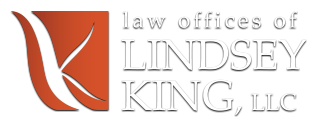May 1, 2020
After Congress pushed through replenishment of PPP funding in late April, many small business owners, independent contractors, and self-employed “solepreneurs” found themselves finally with a bit of financial relief that they so badly needed. Others are still waiting for their applications to be processed, but are hopeful that with the new limitations, funds will be available.
However, as the dust settles and it becomes more likely loan proceeds are showing up in the business bank accounts, the recipients are coming to us with an entirely new set of questions. We are hearing from you:
- What exactly can I do with these PPP funds?
- When and how should I be distributing them?
- What do I need to do to ensure the loan is forgiven?
(Fair warning, you are going to get the dreaded attorney answer) … it depends on your situation. Below we will discuss some basics on what we know so far from the government about the use of PPP funds and the forgiveness standards.
Usage of Funds
Presuming you’ve past the PPP eligibility test, you are likely already familiar with allowable uses. Briefly, PPP loan proceeds can be used for:
- Payroll costs – which includes employee benefits and taxes (but not emergency benefits)
- Owner Compensation Replacement (which is for some purposes a “payroll cost” and in other purposes in its own category)
- Business rent, utilities and/or mortgage interest
- A narrow set of pre-existing debts
- Refinancing of previously received EIDL loans (in some situations)
All of these “costs,” when used within the confines of the regulations, are allowable. At least 75% is to be used for payroll costs and up to 25% for the other allowable items. However, even allowable use does not necessarily equate to forgivable use.
Forgiveness of Loan
The PPP loan was highly publicized as being 100% forgivable – meaning no repayment obligations – which most business owners were pleased to hear. However, in the fine print, we find out that:
- Of the 25% (or less) of the loan proceeds that can be used for non-payroll costs to maintain forgiveness, the expenses have to fall within specific timeframes and have been included on 2019 tax filings.
- 75% or more must be used on payroll costs and – to be 100% forgiveness eligible – employee headcounts and wages/salaries must be largely unchanged or restored within the grace periods allowed for rehiring/restoration.
- The funds used also must adhere to these guidelines and usages within the specified 8 week “covered period” that starts when you receive the PPP funds. In reality, this means businesses may need to act very quickly in both using the funds and in potentially rehiring/restoring workforce and/or payroll levels.
- Owner Compensation Replacement (OCR) falls under the payroll costs category but has an entirely different calculation method to establish the allowable amount for 100% forgiveness.
Confused? You’re in good company. The good news is that if a portion of the loan proceeds are used in an allowable way but don’t meet all of the forgivable standards, only that portion of the loan won’t be forgiven and will instead need to be repaid with the accrued interest.
How do I apply for Forgiveness?
Your lender should designate in your loan note/terms how to apply for forgiveness, but keep in mind the SBA will allow these loans to be sold to other lenders. This means the lender who deposits your funds may not be the lender you need to contact for forgiveness.
The SBA indicates that more guidance on documentation and recordkeeping for forgiveness standards will be provided “soon.” For now, we know that payroll records along with federal and state tax and unemployment forms will be required for payroll costs, and proof of payments for the “other expenses” during the covered period will meet those obligations.
However, what is not yet clearly defined is how OCR should be both tracked and reported for forgiveness purposes. For now, OCR funds should be very carefully recorded and documented in their dissemination, with a cautious eye also on the covered period.
If you need more assistance on interpreting your PPP loan or guidance in your record keeping – contacting your legal or accounting teams is recommended.
The Law Offices of Lindsey King is now offering COVID-19 specific support services. Click here to see if you are interested in learning more.
| IMPORTANT DISCLAIMERS: 1. The information above does not constitute legal advice, nor does it create an attorney-client relationship. Please consult your attorney with specific questions. 2. As this situation is constantly changing, we will make every effort to stay current on this topic, however this information is provided as general guidance and may not apply to your situation, nor should it be relied upon exclusively. Please consult and confirm with your attorney if you have questions about these updates or their applicability. 3. In some jurisdictions this communication/website might constitute legal advertising. The choice to hire an attorney who is right for your business should not be made based solely upon advertisements. If you would like to learn more about our firm, please click here to learn about our firm and how to contact us. |
Copyright © *2022* *Law Offices of Lindsey King*, All rights reserved.*
Copyright © *2022* *Law Offices of Lindsey King*, All rights reserved.*
